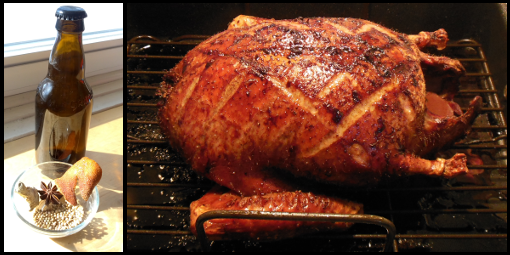Meat Month: Muscovy Duck
Muscovy is a special type of waterfowl. It has origins in South America and is more closely related to geese than ducks (Avianweb.com). They take longer to grow to maturity, even their eggs take longer to hatch than a mallard. Muscovy take more time and resources to raise. They are larger than your standard duck. According to Ducks Unlimited, females average at about 3.86 lbs and males average 7.72 lbs. It is possible for the males to get up to 13 lbs.
Raising Muscovy is worth the time and resources. This bird is more hearty and rich than your standard duck. It is much more lean, with just a thin layer of fat under the skin. It tastes more like veal than poultry. The stock made from this bird comes out dark and rich like a beef broth.
Last year, I had to order it in advance from Acorn Acres Farm (formerly Welcome to My Garden). This year, I lucked out and found out about a short-notice slaughter of a few of the birds. I went as soon as I could to pick up my bird. It was 6.8 lbs. I let it defrost while I was out of town and came back ready to cook it up.
I cook Muscovy with great care. This is a delicate bird, more easy to overcook than lamb. When I first researched the roasting techniques, people talked of cooking to perfection (medium). By the end of the meal, the breast meat left on the table had cooked to a medium-well! When cooking this, think more beef than poultry.
There are various roasting techniques. I found one recipe from a farm that raises the waterfowl that recommended to cook it at 325° for 45 minutes per pound. Most sites and recipes say to cook it at 475° for 11-15 minutes per pound. For fear of overcooking, I prefer the latter. The first time I made it, I felt it was slightly overcooked. It was tender and juicy, but I felt I could do better. This time I mixed the two methods: 450° for 8-10 minutes per pound (rotating half way through). I let it rest for 15 minutes. This seemed to be the magic method for this particular bird. It was tender, juicy, and medium with the skin perfectly crisp. I made up a stout glaze specific for the Muscovy. The malty and roasted flavors of the stout pair well with the rich earthiness of the Muscovy.
Basic Cooking Process
Prep It
- Remove the offal and neck from the cavity and cook separately (pate, chef's special, in soup, etc.). You can cut the extra fat around the cavity if you want to render it for cooking. If not, leave it there.
- Cut a cross-hatch pattern over the skin of the duck (not deep enough to reach the meat). This is typically done on fatty ducks to allow the fat to cook out during roasting. I like to do it on this leaner Muscovy to allow the glaze and seasonings to penetrate the thick skin.
- Fully coat with 2 tbsp of Olive Oil, 2 tbsp of course kosher salt, and 1 tsp of course ground fresh pepper.
- Cover and refrigerate overnight (or at least 3 hours).
- Cook glaze.
- Remove a 1/4c of glaze to cool.
- Remove Muscovy from refrigerator (it should be allowed to warm closer room temperature).
- When the glaze is cool to the touch coat the Muscovy.
- Preheat the oven to 450° F while the glaze is soaking in.
- Cook bird half way (depending on size of bird).
- Rotate the pan, add more glaze, and cook the remainder of the time. Rotating is very important for even cooking.
- Remove from oven, add remaining glaze, and loosely cover for 15 minutes.
Stout Glaze Ingredients
12oz Stout (I used a smoked stout)1 Whole Star Anise
1 Slice of Dried Orange Peel (3 in)
1 Slice Ginger (Dried or Fresh - approx. 2 in)
1/2 tsp Dried Coriander
Stout Glaze Basic Instructions
- Pour It
Pour the stout into a medium pot and heat it over low heat. This carbonated beverage may boil over if heated too high. - Spice It Up
When the stout is simmering, add in the spices. Whisk together. - Wait, Whisk, & Watch
Bring the heat up to medium and simmer. Whisk every few minutes. Reduce by half or until it coats the whisk. - Strain & Reserve
Strain it into a measuring cup. I pull 1/4c off separate to cool faster for the first glaze. I use the measuring cup to pour it on the bird and baste it over so that the basting brush does not contaminate the glaze.
Leftovers can be used for a number of meals.
- Simmered in green salsa for tacos.
- Shredded in vegetable soup.
- Stewed in chili.
Keep in mind the following points when handling raw meat.
- Always wash your hands and your preparation surface thoroughly before and after touching the meat.
- Wash basting brush and other utensils used on raw meat before use on cooked meat.





Comments
Post a Comment